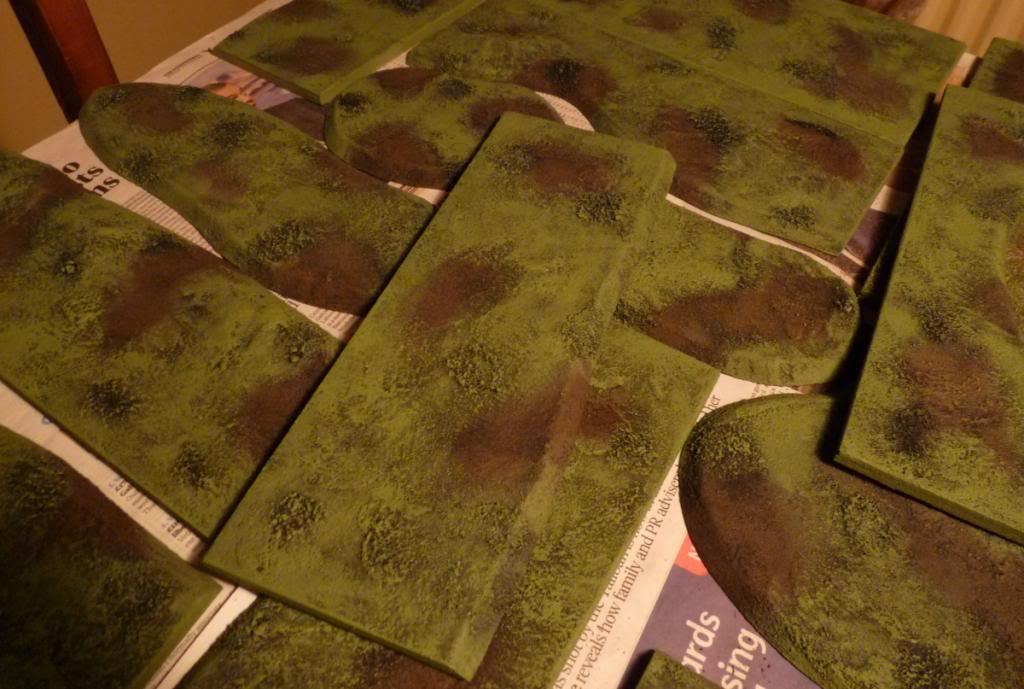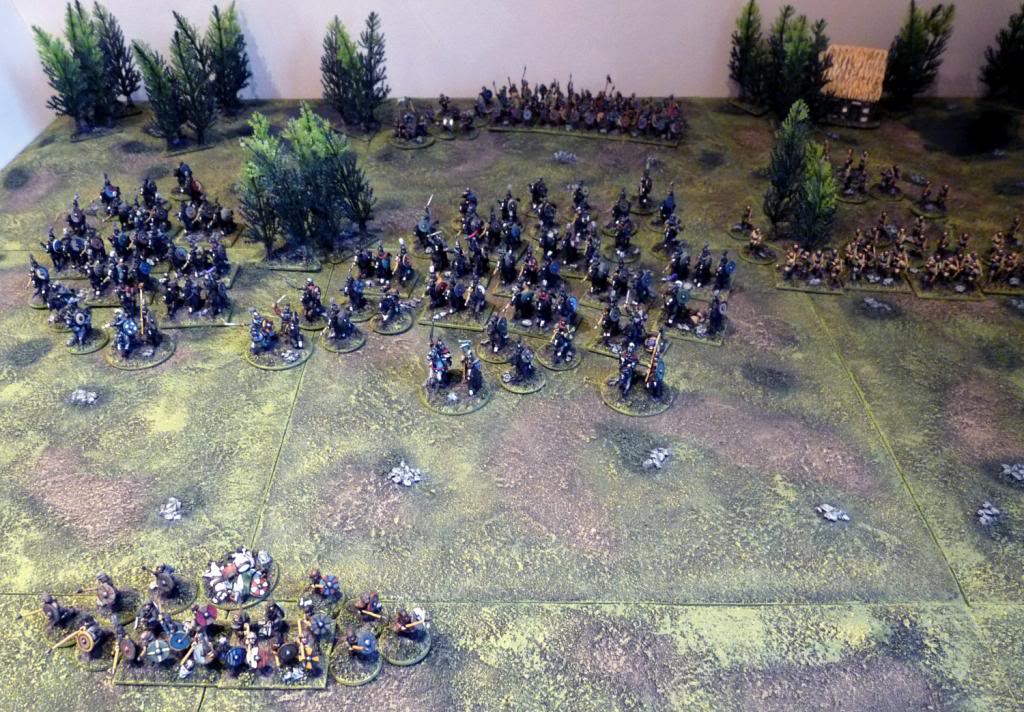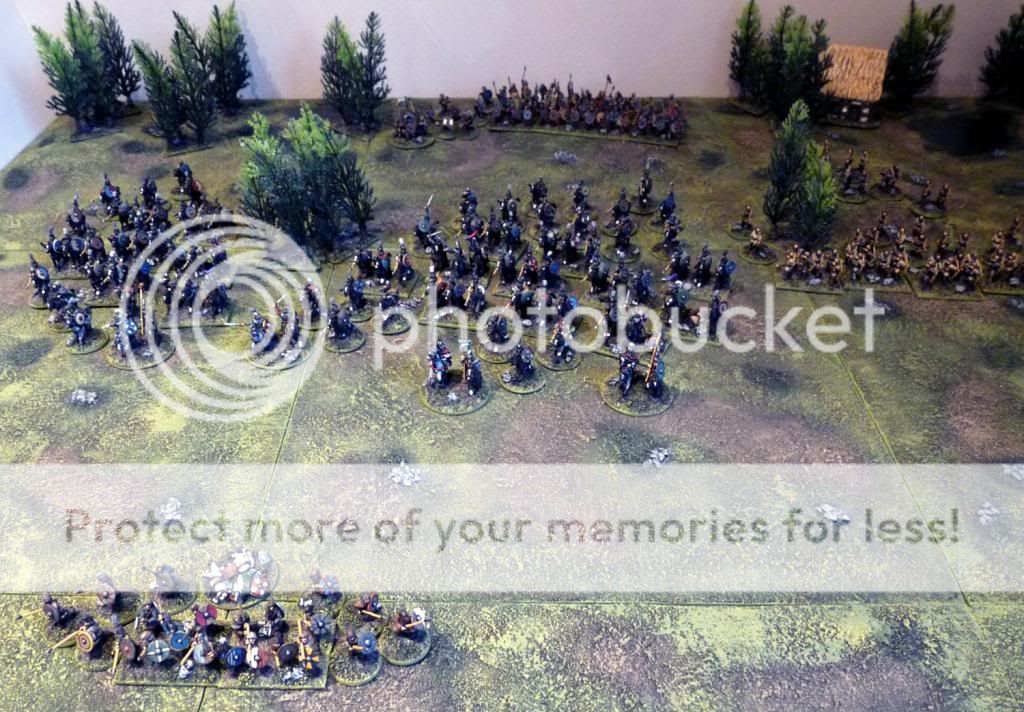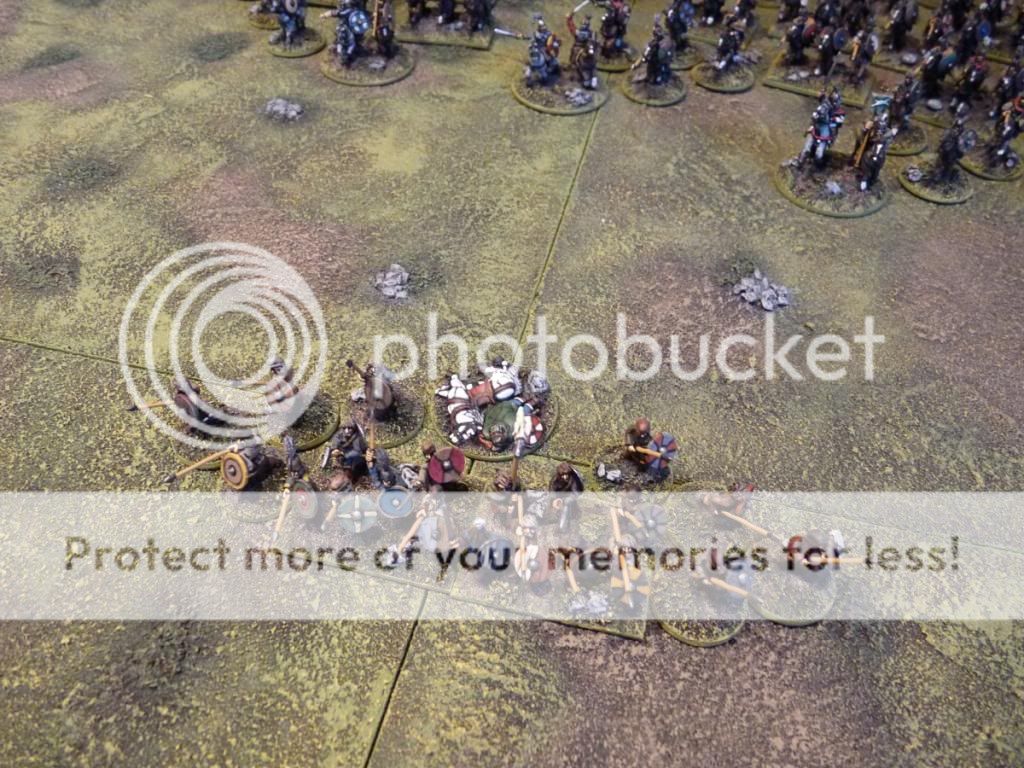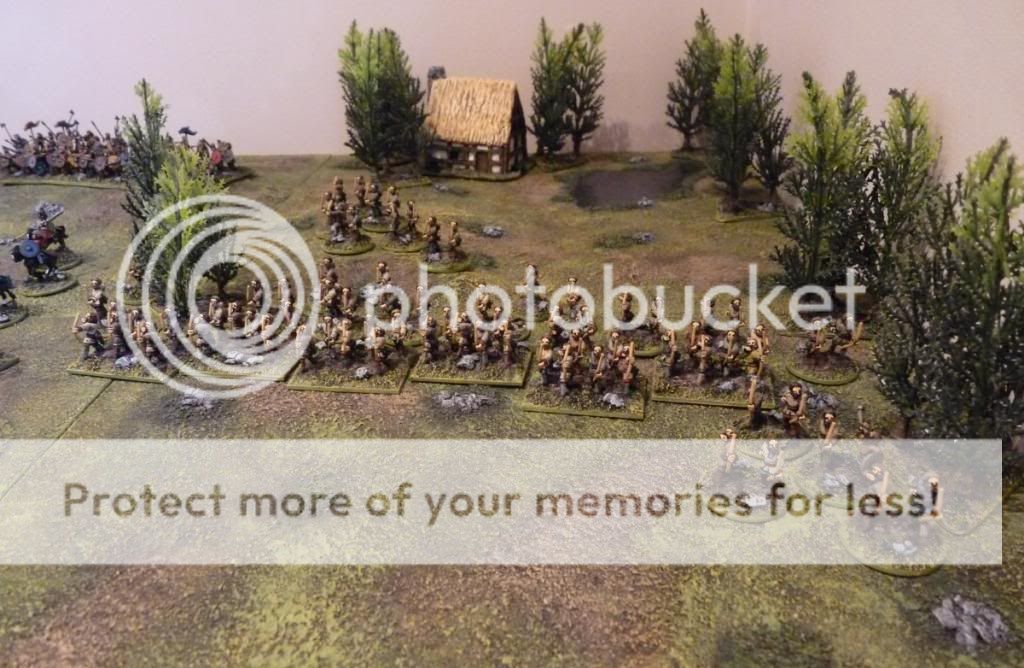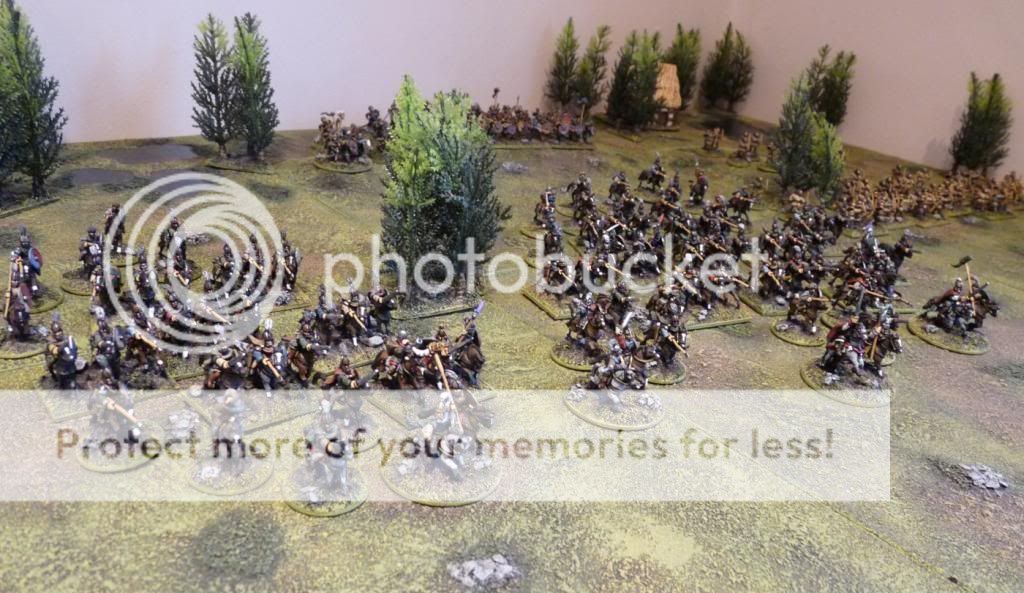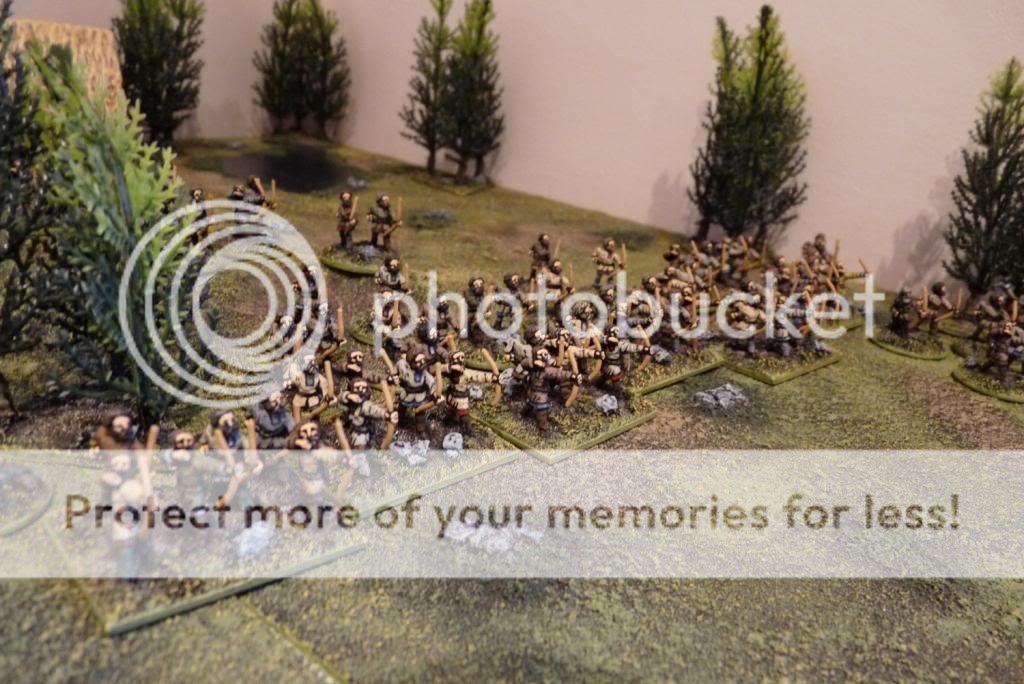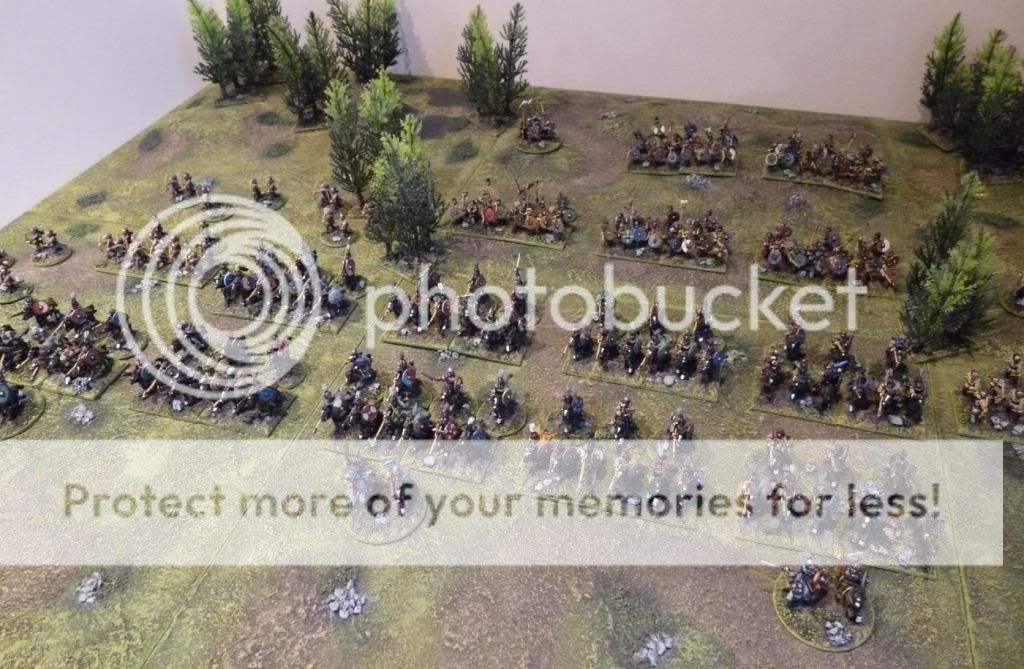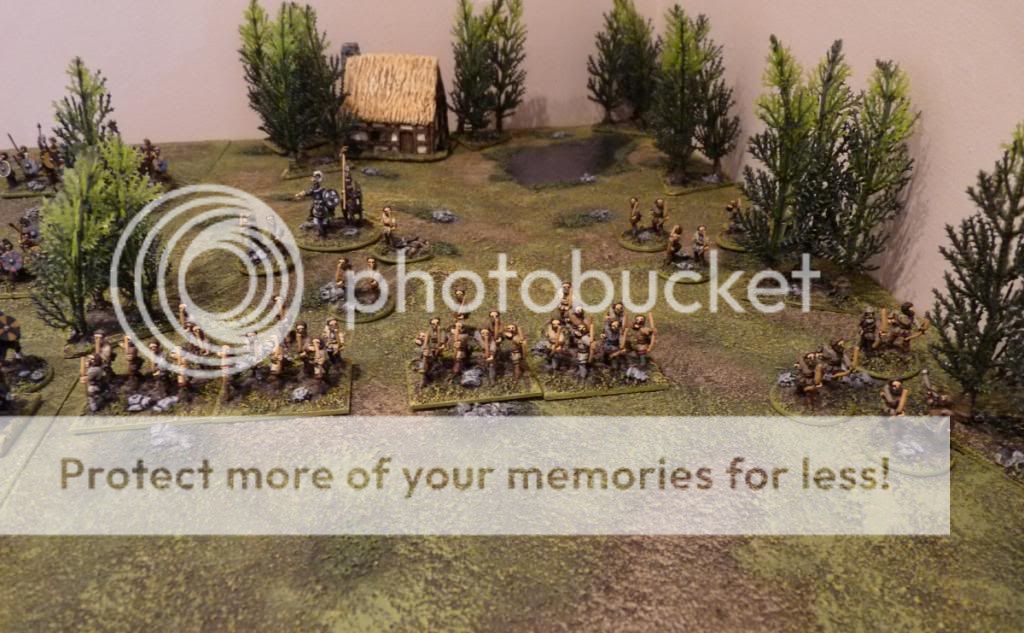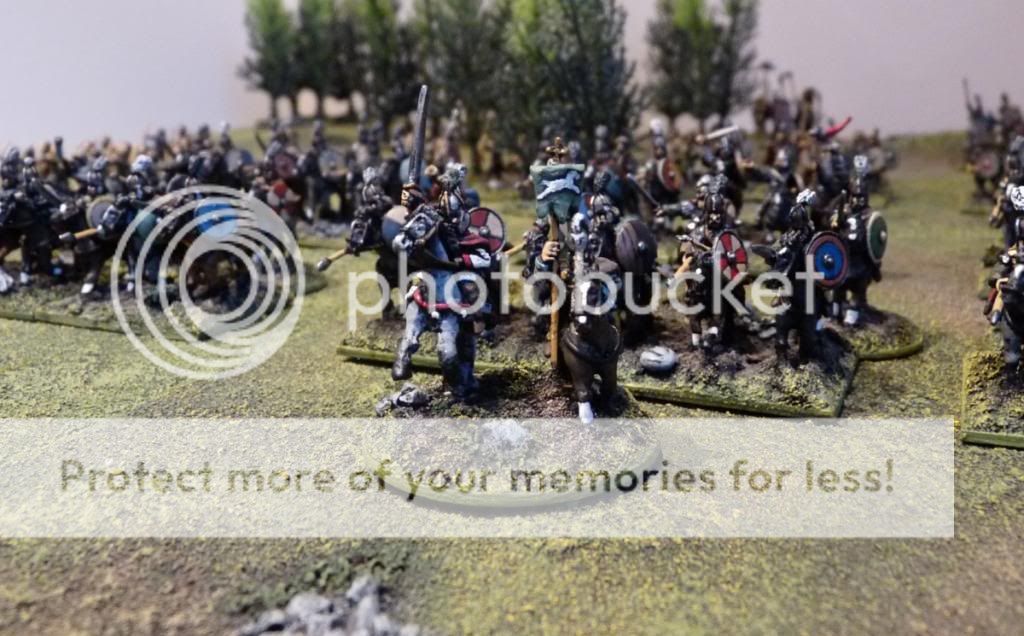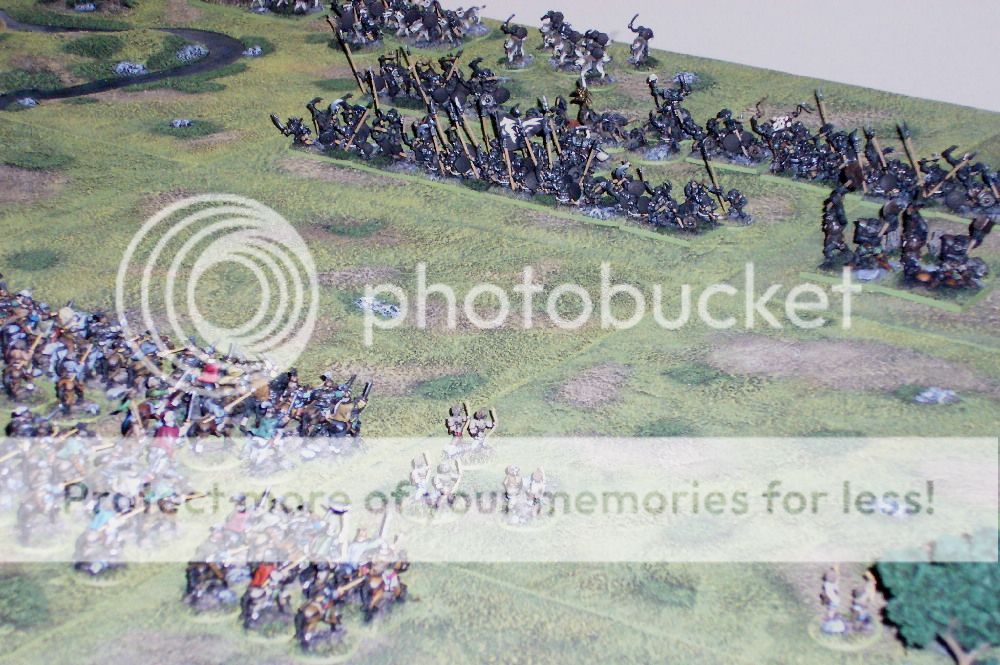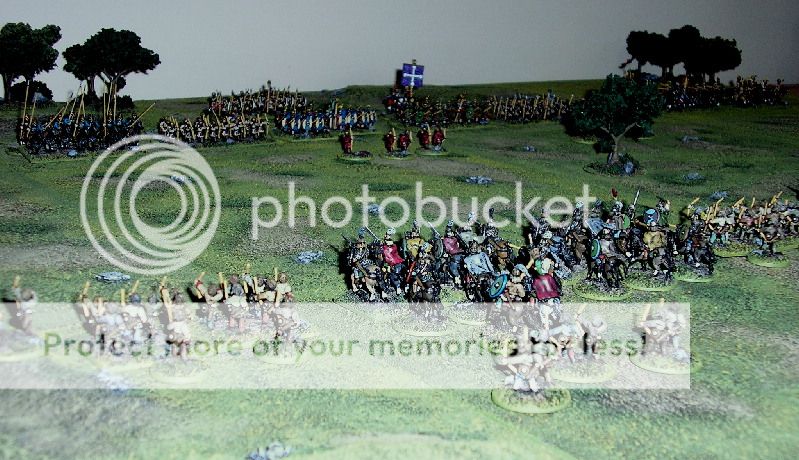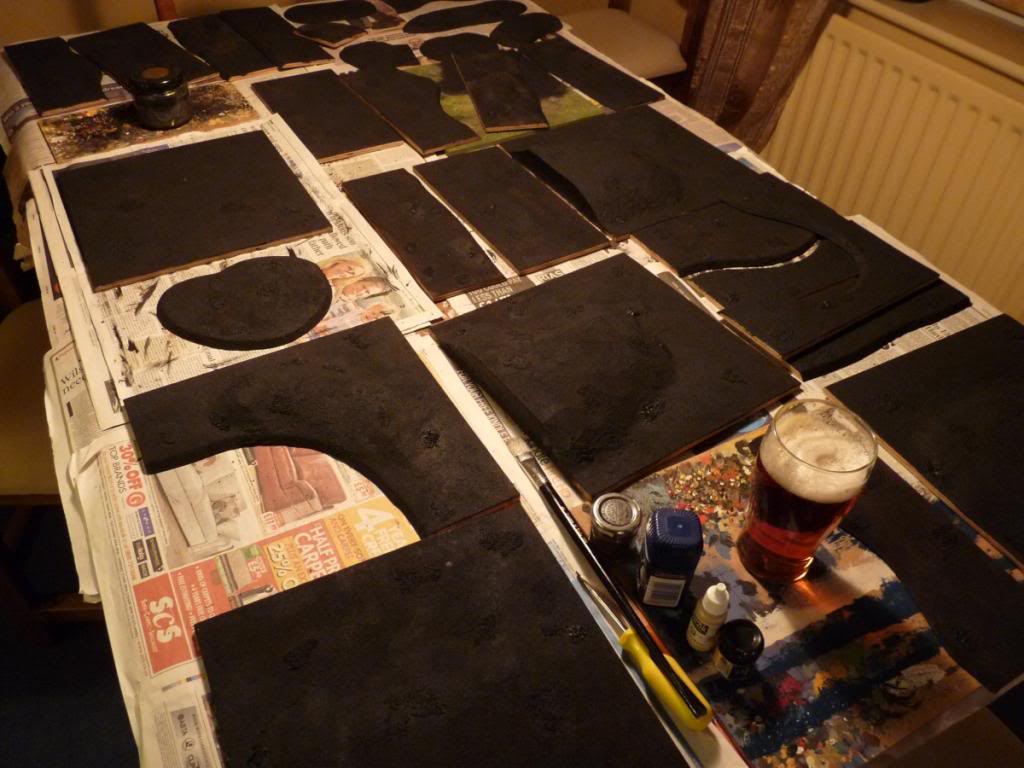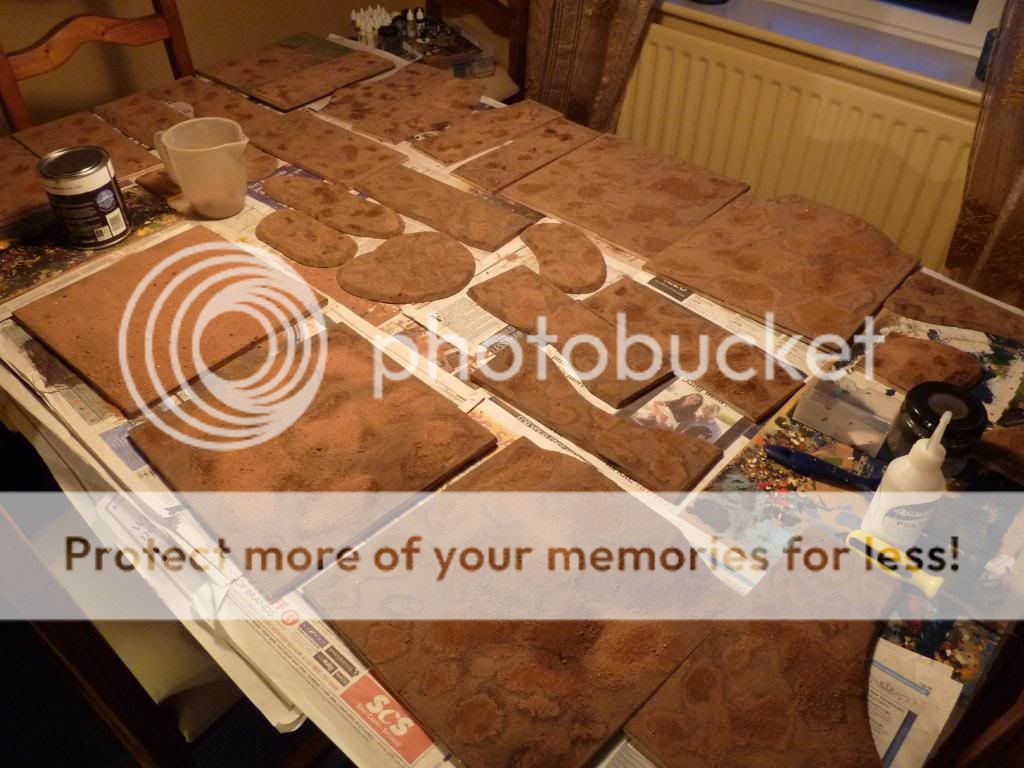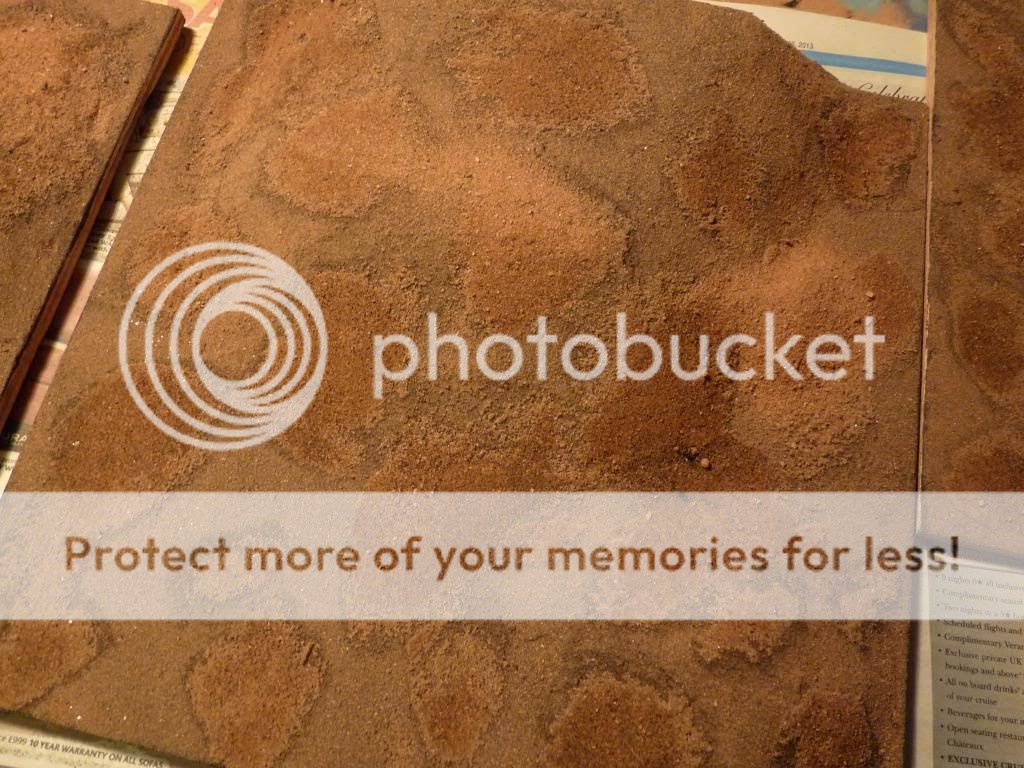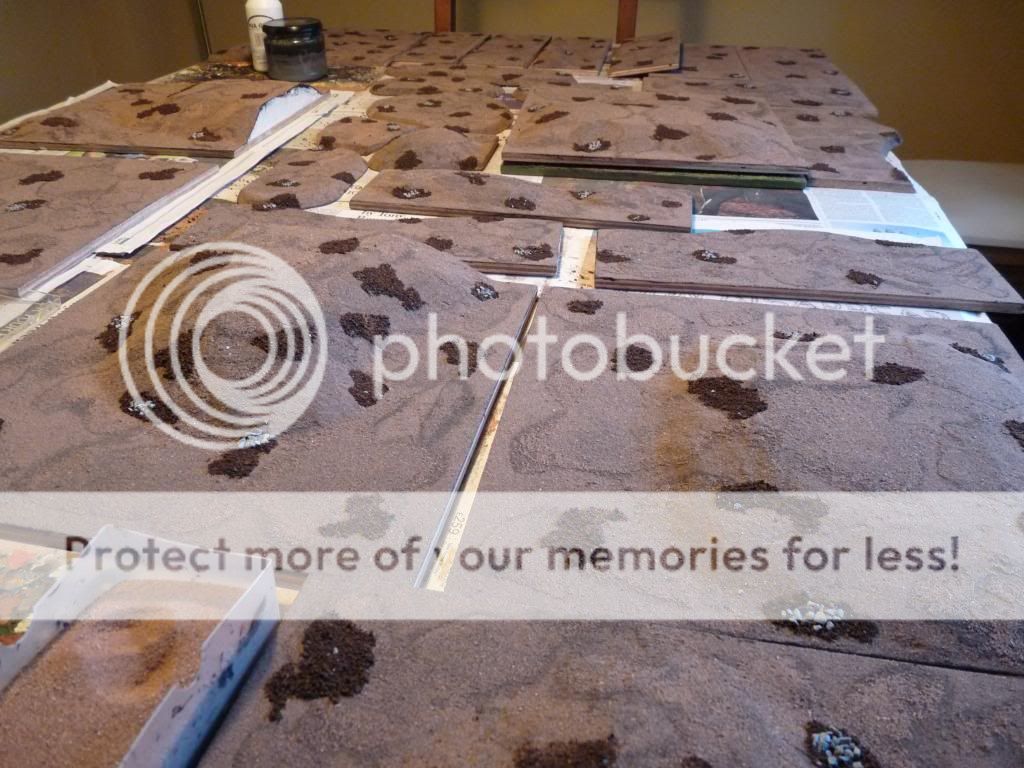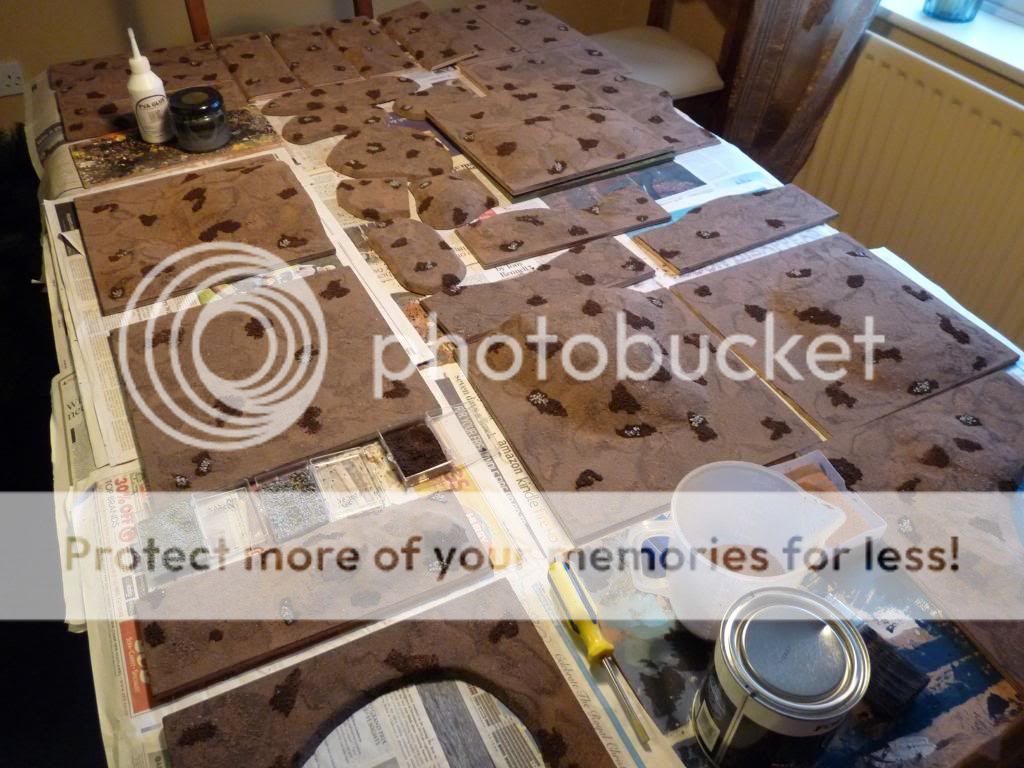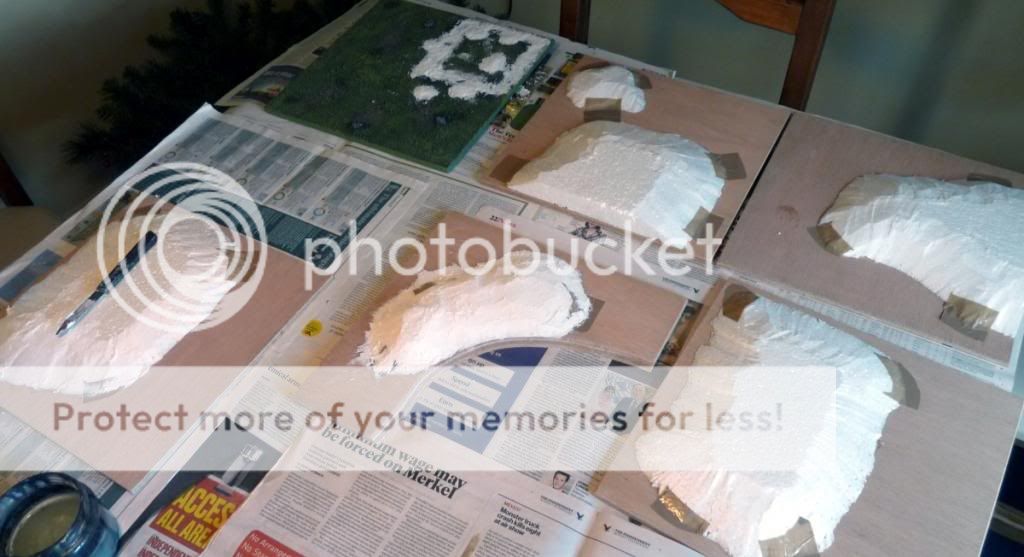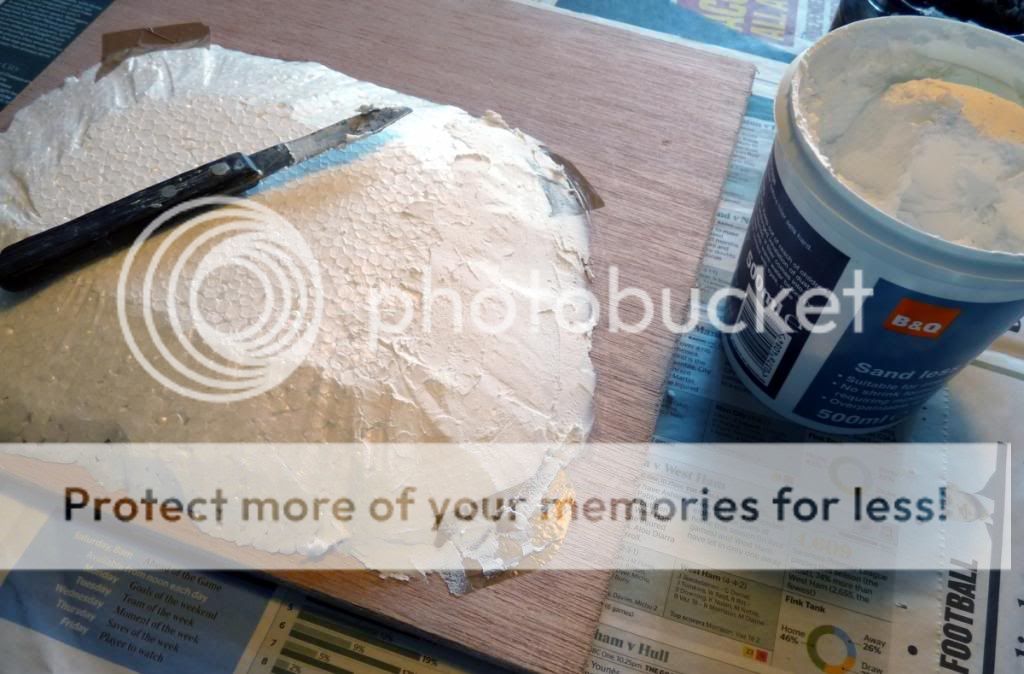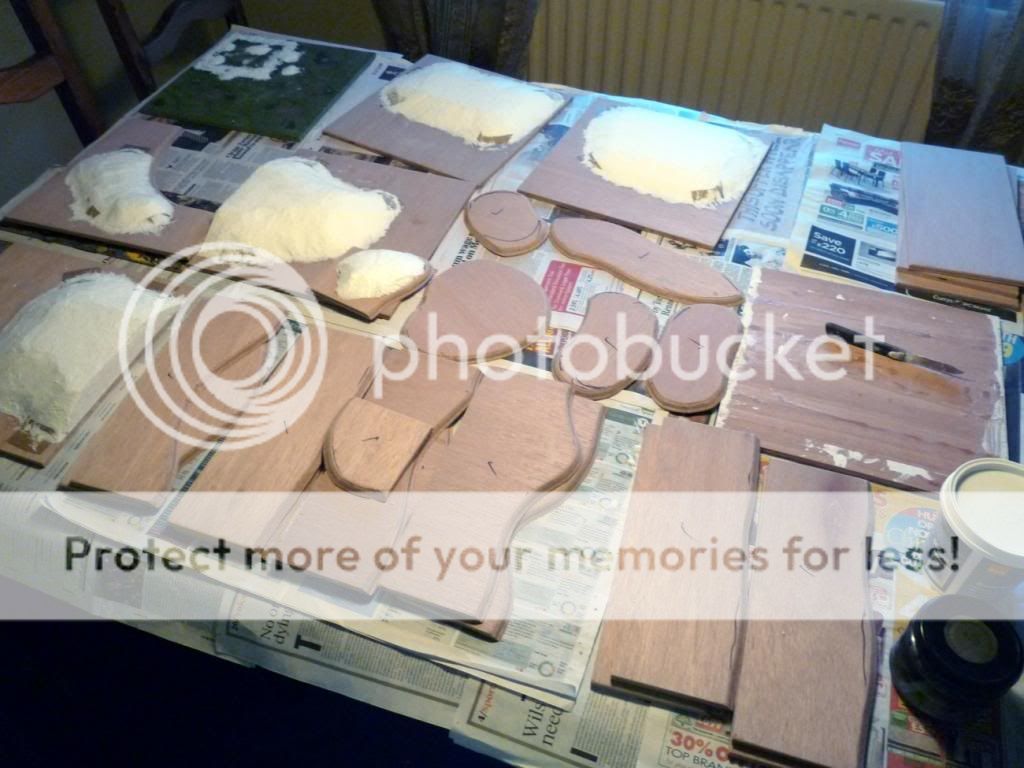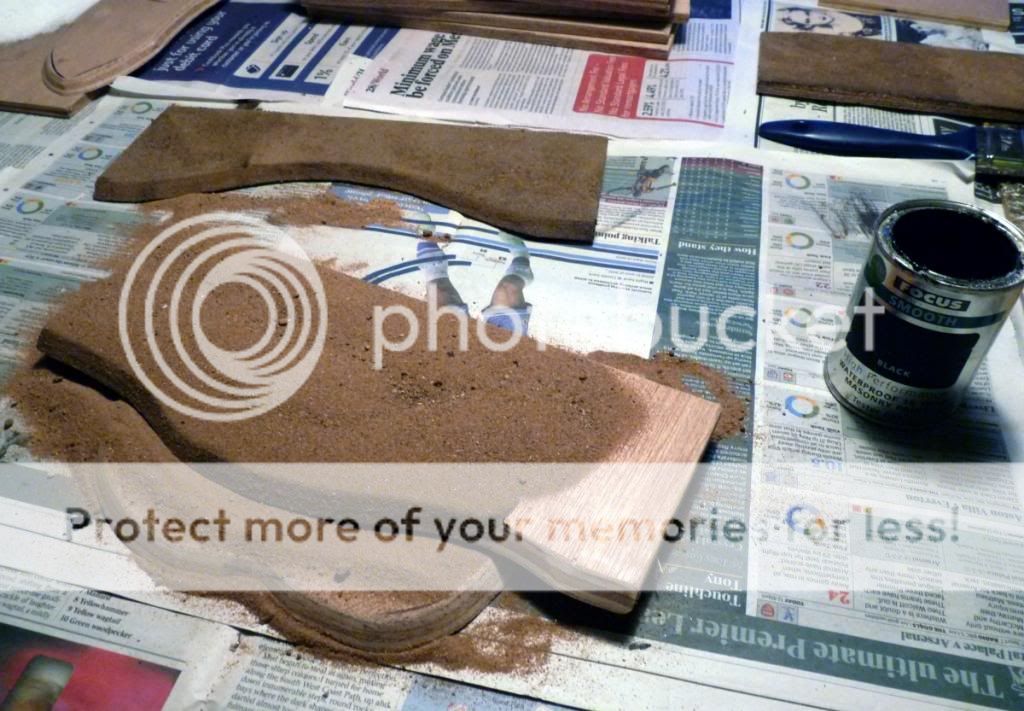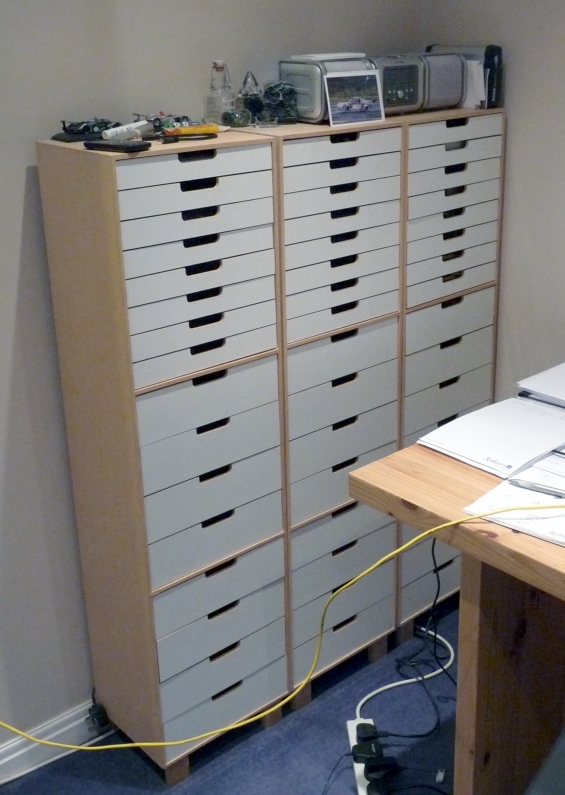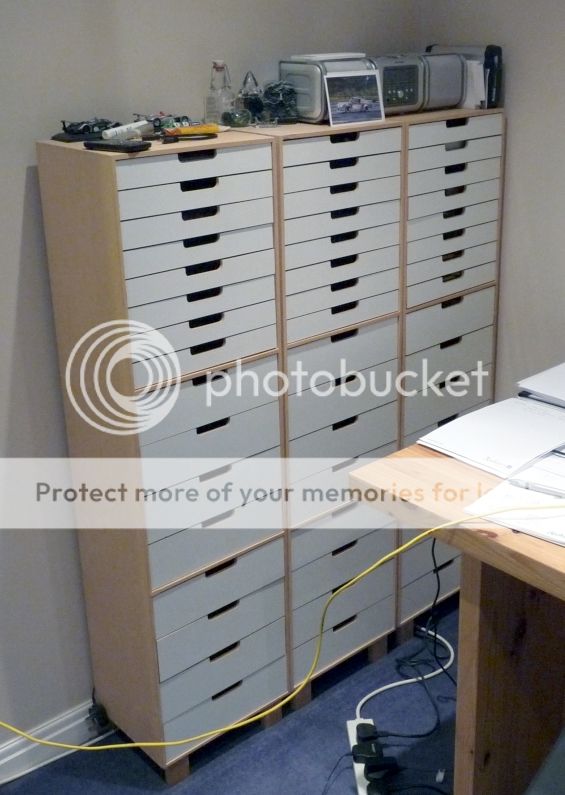..and here are a couple of boards I prepared earlier (last October to be precise). They’re 4×3 feet of 20mm chipboard, so they’re pretty heavy. I’ve had them for about 15 years and in recent times they’ve been relegated to garage rafter storage duties, but I decided to renovate them with a fresh coat of a dark blue gloss paint in readiness for the riverbanks project. They’re stored behind the door in my games room/office, resting face to face with the reverse of one board painted the same colour as the wall, so they’re pretty much invisible unless you’re looking for them.
Here’s a quick set-up with some of the new boards placed on top. Obviously the addition of some trees, buildings and other scenery will enhance things, but this is the basic look I was after.
With a row of terrain squares removed the river can be widened, allowing for the off-cut islands to be used. I think this will offer me plenty of flexibility and options for different types of battlefield. I can do a large bay or inlet, a big central island, as well as straight or winding rivers. As I’m aiming to get my post-Napoleonic Sharp Practice project ready to play this year, I think a bit of water, with the odd bridge or boat, will make things interesting! These rivers, like the rest of my terrain, are designed to be used for all scales I play with, from 6mm to 28mm, and I’m looking forward to getting plenty of use from them.






